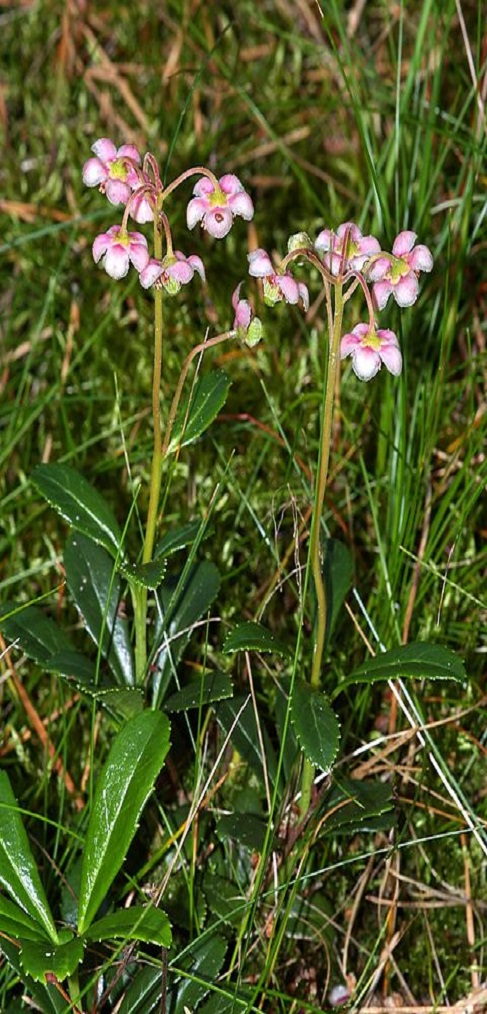
species of the week # 9 – umbellate wintergreen
The umbel winter love is an evergreen dwarf shrub with a woody base that sometimes forms entire carpets. Older shoots carry one to four flower shafts with terminal Doldentrauben from two to seven nodding flowers, which form whole flower carpets at favorable locations. Because the plant remains green even in winter, the plant is said to have a special preference for the winter.
| Distribution status | Extinct in Rhineland-Palatinate |
| Remaining deposits | Brandenburg, Bavaria |
| Last sighting in Rhineland-Palatinate | Mainzer Sand, (2011 Wiesbaden) |
| Habitat | nutrient-poor shady sandy grounds, usually in jaw-forests |
| Threat of | climate change, nutrient input, habitat loss |
The winter love is dependent on semi-shady, nutrient-poor, moderately dry locations and dry-hot summers can completely destroy the flower carpets. In the soil, the winter love enters into a symbiosis with root fungi, which in turn are interlinked with woody plants (mycorrhiza). In this nutritional community, it is supplied with nitrogen, but also carbon, and can also colonize nutrient-poor soils as well as penetrate into shady areas, where it could not live without the fungal partner
Because of its glycoside-containing leaves, in which arbutin and Urson have been found, the winter love has been used as a medicinal plant for kidney and bladder problems. The flowers are pollinated by insects, but can also pollinate themselves. Probably because of the symbiosis with root fungi, the offspring from seeds has not been successful so far.
Politically necessary:
– Climate protection
– Reduction of nitrogen input via air pollutants
– Habitat conservation, careful forest management
